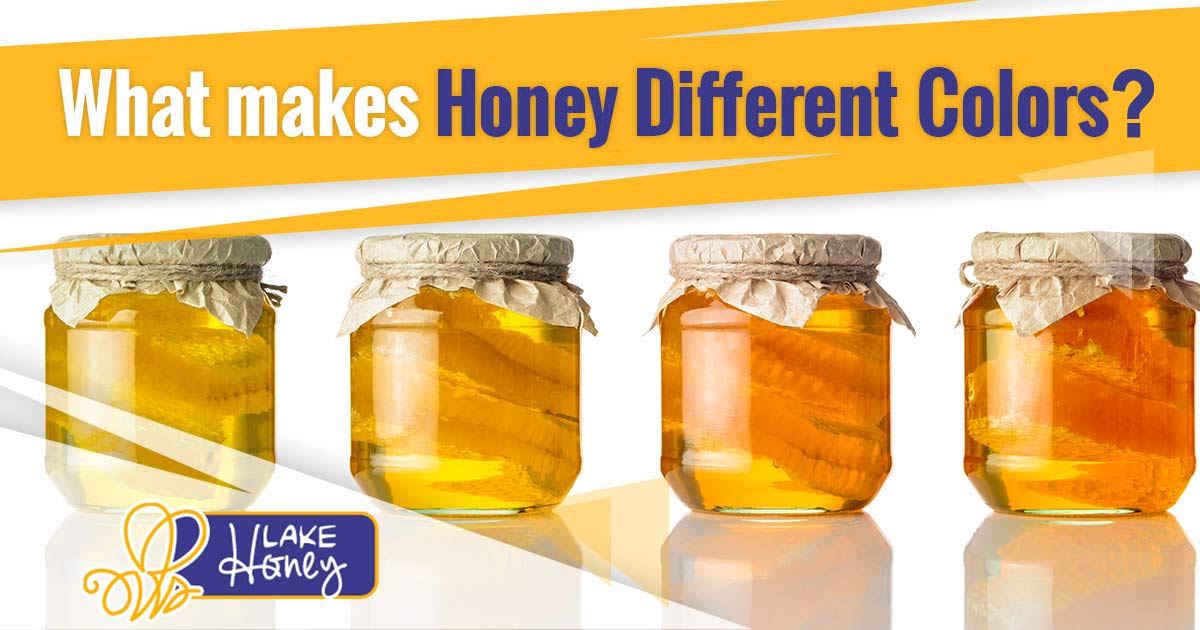If you’re like most people you’re not sitting around thinking about the complexities of honey and what makes different colored honey. But if you’re looking to buy honey as a gift for a honey enthusiast or you’re thinking about keeping bees this is a question that may cross your mind more often.
Different colored honey is created because of the type of nectar collected. As a matter of fact, you can sample over 300 types of honey around the United States. Every type of honey comes from a different type of flower. Similarly, each type of honey will have a specific color, and the relationship between the honey and its color is based on specific characteristics.
Let’s dig a little deeper into the different colored honey types and some of the special differences between honey and what the colors mean.
Why Does Honey Have Different Colors?
Many people think honey is honey and that it’s sweet and sticky. But what if we told you that some honey is very mild, and barely has a flavor. And some are stronger than you could imagine, packed with enormous flavor. With over three hundred kinds of honey, you can understand how that could be the case.
You can also wonder if the bees are responsible for the color difference? After all there are over twenty thousand species of bee. When you look a bit deeper however you learn there are only 7 different types of the honeybee. Leaving us to wonder, could it be the flower that matters?
The flower is the delaminating factor, depending on the flower and the nectar the be collects creates the color of the honey.
Different States
Honey is made in every state in the United States, but every state has different flowers. This means only certain regions in the country produce some extremely rare honey. Also, most countries in the world produce honey. With the different species of honeybee and the millions of flowers in bloom around the world the colors of honey are bountiful.
The Colors of Honey andTheir Meaning
The colors indicate the intensity of flavor. The lighter the honey the milder the taste. Depending on the nectar and the floral source. In the United States, the USDA has a chart that specifies the color categories of honey. There are seven, they are as follows:
- Water White
- Amber
- Light Amber
- Extra White
- Dark Amber
- White
- Extra Light Amber
For example, white represents the meaning of colorless.
The Taste of Your Honey
Remember it depends on the species of flower that the nectar comes from. The taste and smell of the honey will also be different. The color and flavor are connected. There is one rule most honey enthusiasts and beekeepers alike understand. And that is this, clear or pale honey have a delicate, and soft taste. Where darker color kinds of honey tend to have more of a pronounced flavor some would even call it bitter or sharp.
Note: the color of the honey is acquainted with the time of year or the season of harvest also. This is often overlooked when discussing the color of honey.
Other Factors that Affect Color
Another reason for different colored honey is when it’s exposed to heat. When honey is stored in an area of higher temperature it will turn dark. If the honey is stored for any major period of time it can begin to granulate and then the color will be based on crystallization. An example of this would be creamed honey.
Is the Quality Of Honey Determined By The Color?
The color is never included in the grading system of the USDA. Several beekeepers and consumers alike are concerned with the color. As we mentioned earlier the light the taste the milder the flavor. What’s more, is that the color can factor in the number of antioxidants inside the honey. This is explained by many case studies.
Experts believe the darker colored the honey, the higher the antioxidants and vice versa. That is why so many people say they enjoy health benefits when eating raw honey. This is another reason for different colored honey being analyzed so heavily.
In Conclusion
Honey can come in hundreds of flavors, color combinations, and healthy options. When a bee goes to work and transforms the nectar of a flower into honey the color is born. The color can be used to determine the quality of the honey. Normally processed honey is very light in color and does not hold a high level of antioxidants.
If you are looking for the best honey that will offer you enormous opportunities to enjoy the health benefits raw honey and offer. Lake Honey is the place to call, their bees have access to bluebonnets and other native flowers like Indian paints. This makes their honey delicious and packed with antioxidants. The pure and additive-free honey is thick and enjoyed by all to try it.

